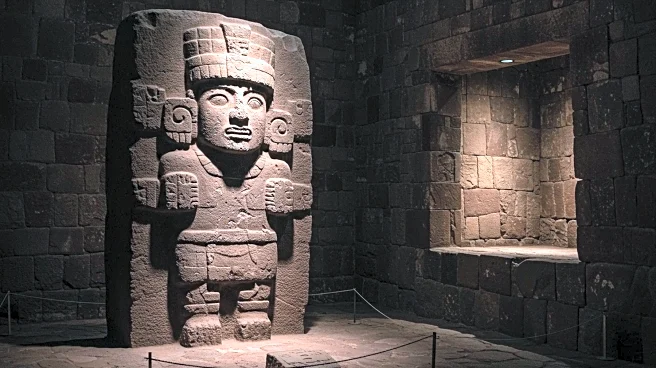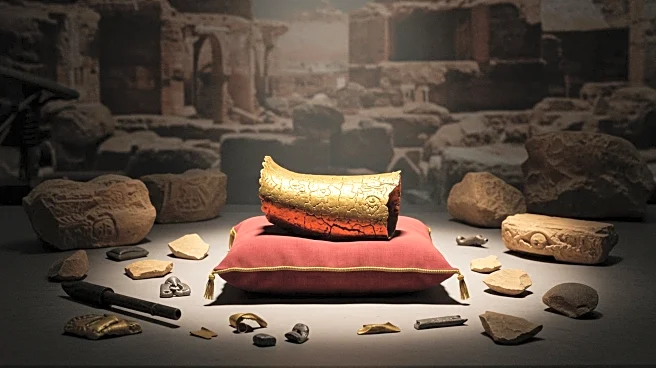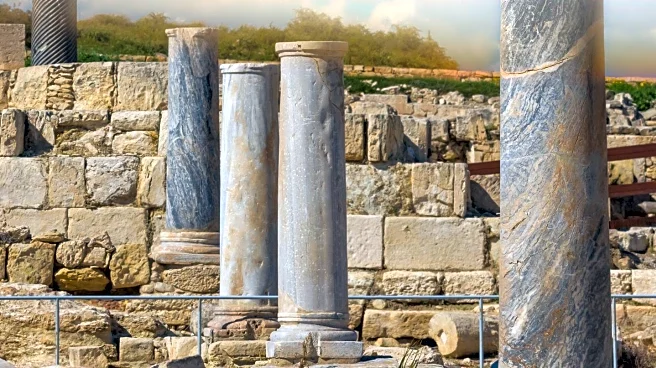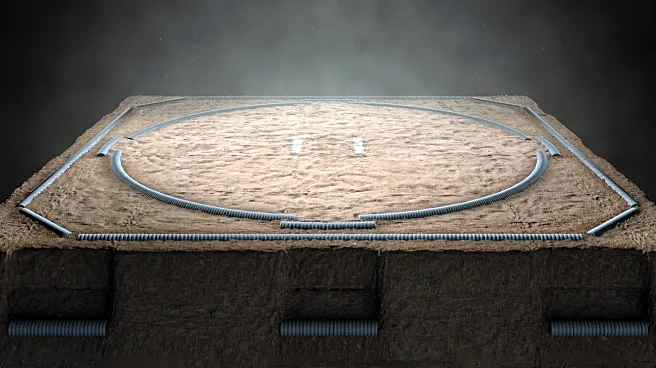What's Happening?
Archaeologists have discovered the ruins of an ancient temple in Bolivia, believed to belong to the Tiwanaku civilization, which predates the Inca Empire. The temple, located in the highlands of Caracollo, is approximately 130 miles south of the established Tiwanaku site. The discovery includes architectural elements typical of Tiwanaku style, such as a terraced platform and sunken courtyard. The temple's location suggests it may have served as a strategic outpost for controlling trade routes and exerting sociopolitical influence in the region. The findings provide new insights into the interconnectivity and expansion of the Tiwanaku civilization.
Why It's Important?
The discovery of the temple is crucial for understanding the Tiwanaku civilization, which remains enigmatic due to limited archaeological evidence. The temple's strategic location highlights the importance of trade and religious practices in the expansion of Tiwanaku's influence. This finding contributes to the broader understanding of pre-Inca societies and their development, offering potential insights into the social, political, and economic structures of ancient civilizations. The research may also inform current archaeological methodologies and theories regarding ancient state formations.
Beyond the Headlines
The Tiwanaku civilization's collapse is believed to be linked to environmental factors and social unrest, offering lessons on the impact of climate and societal dynamics on civilizations. The discovery of the temple underscores the importance of interdisciplinary research in archaeology, combining historical, environmental, and social perspectives to reconstruct ancient societies. This approach may lead to a deeper understanding of the factors that contribute to the rise and fall of civilizations.











